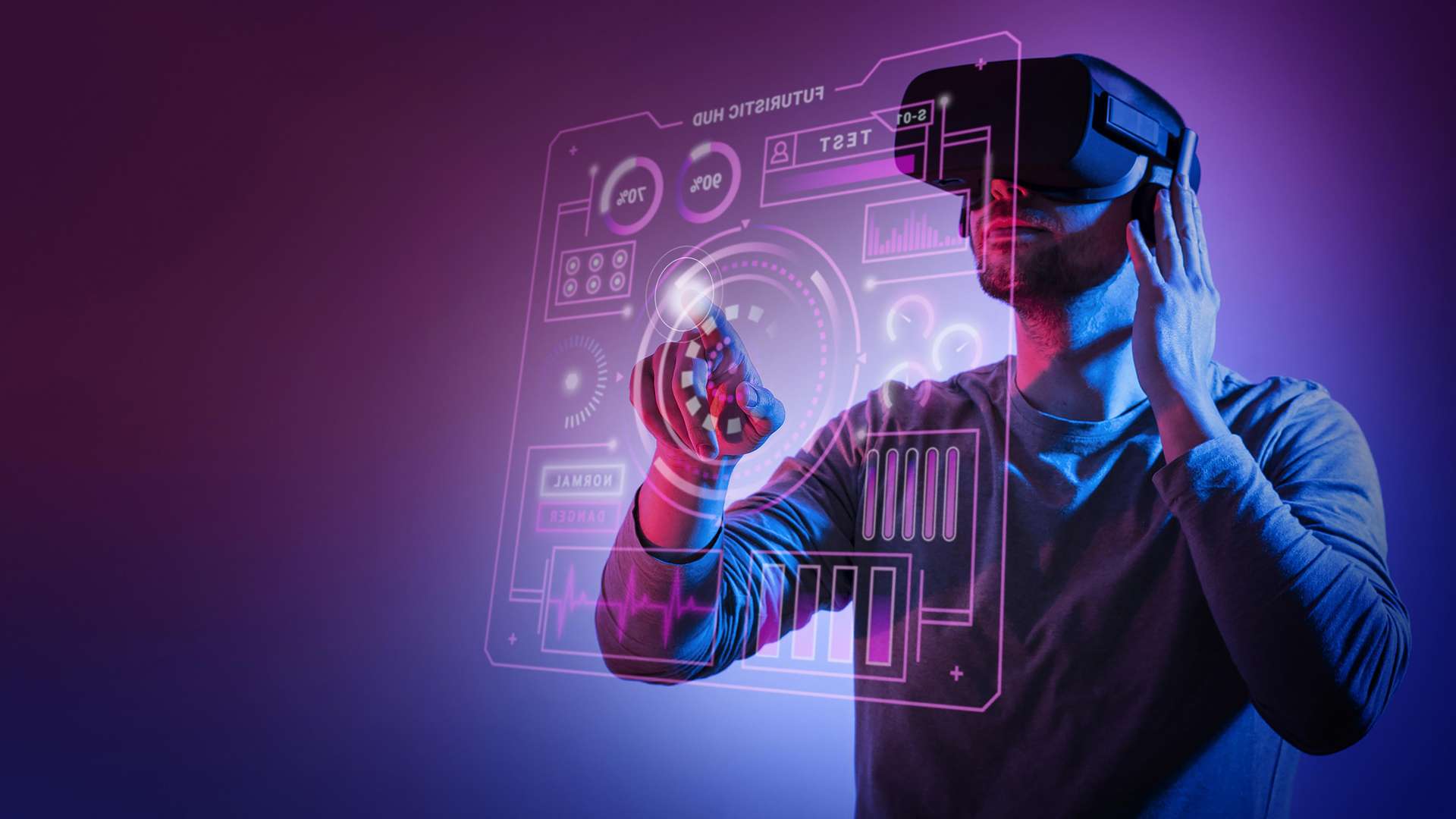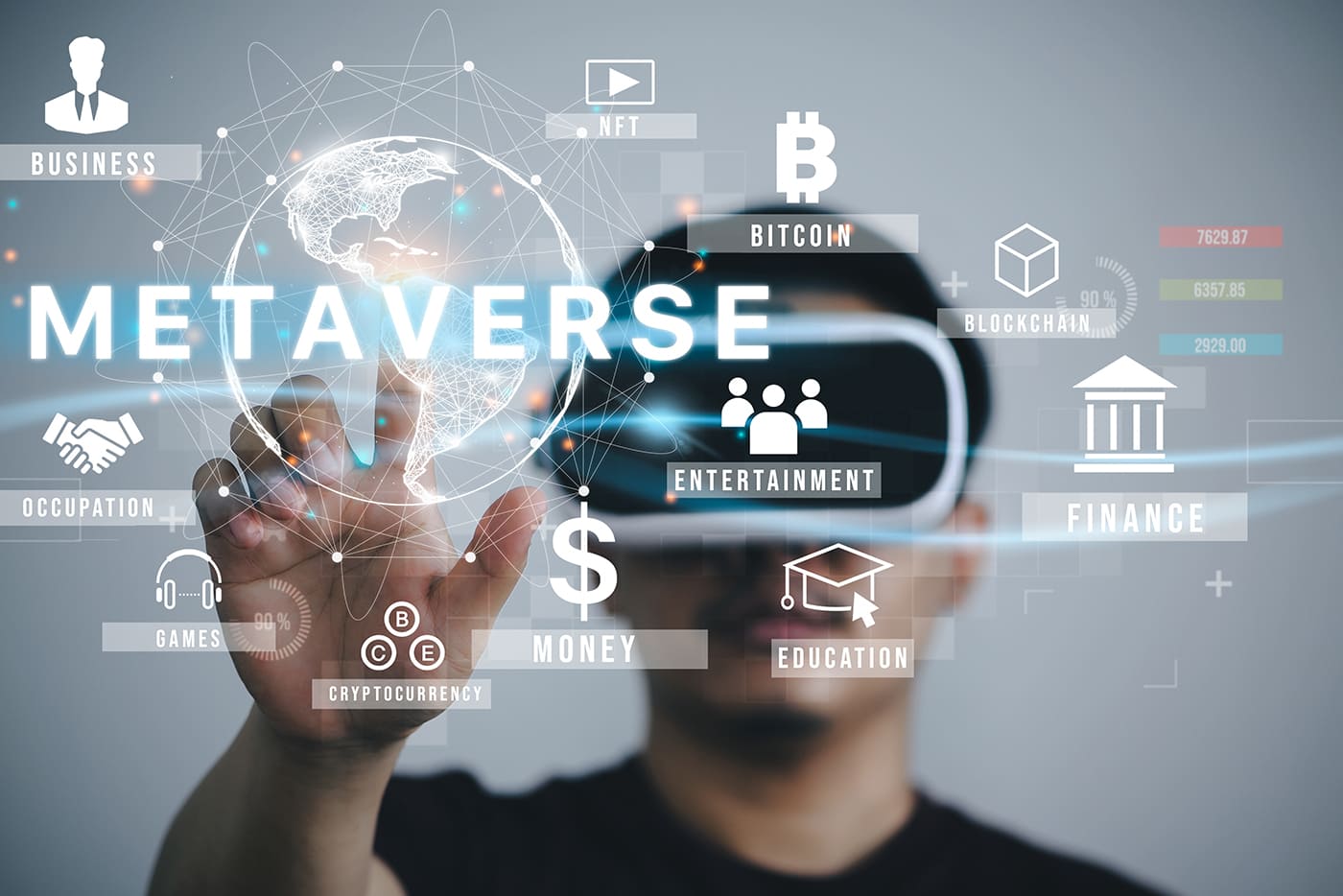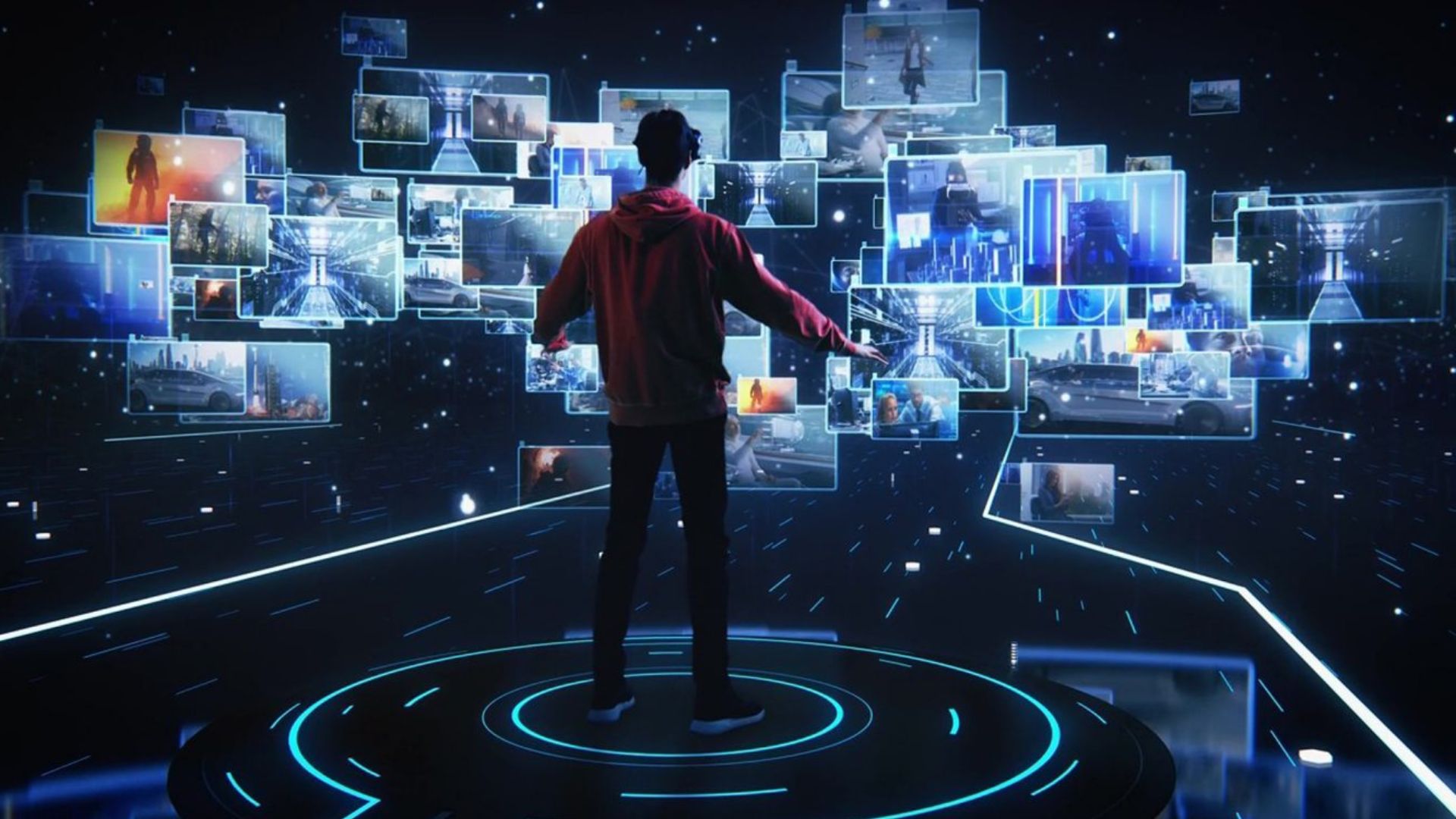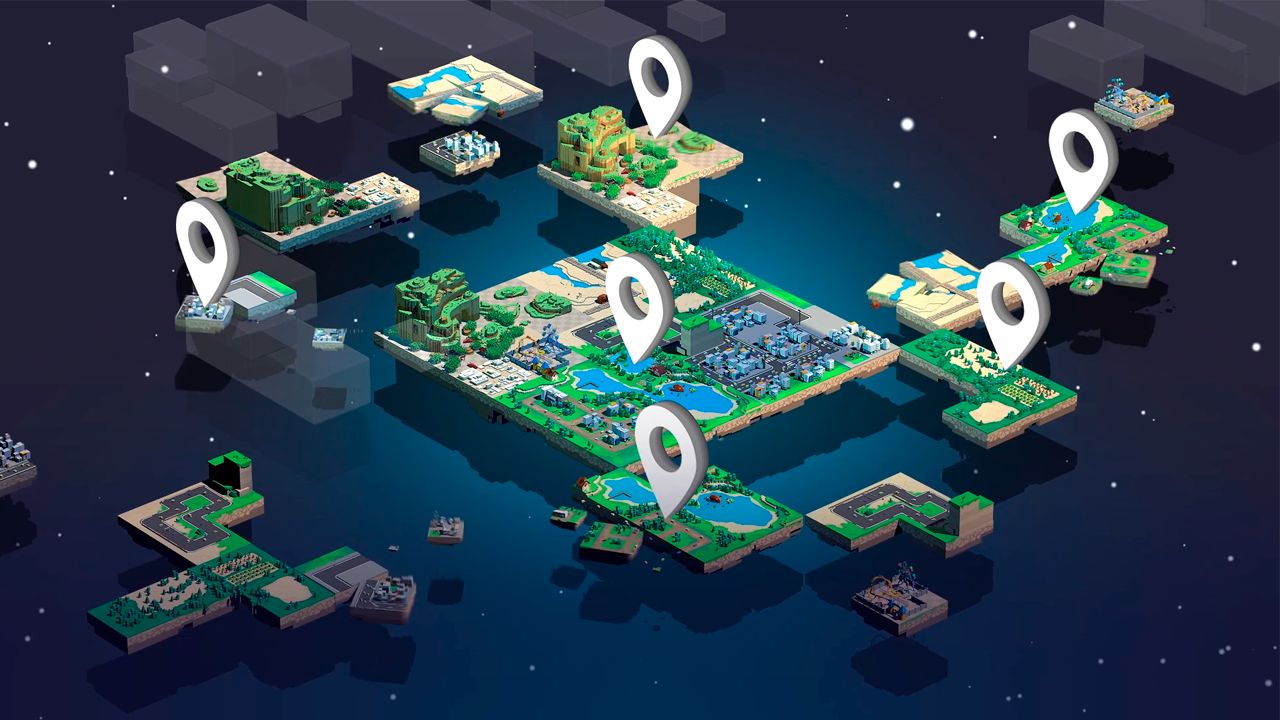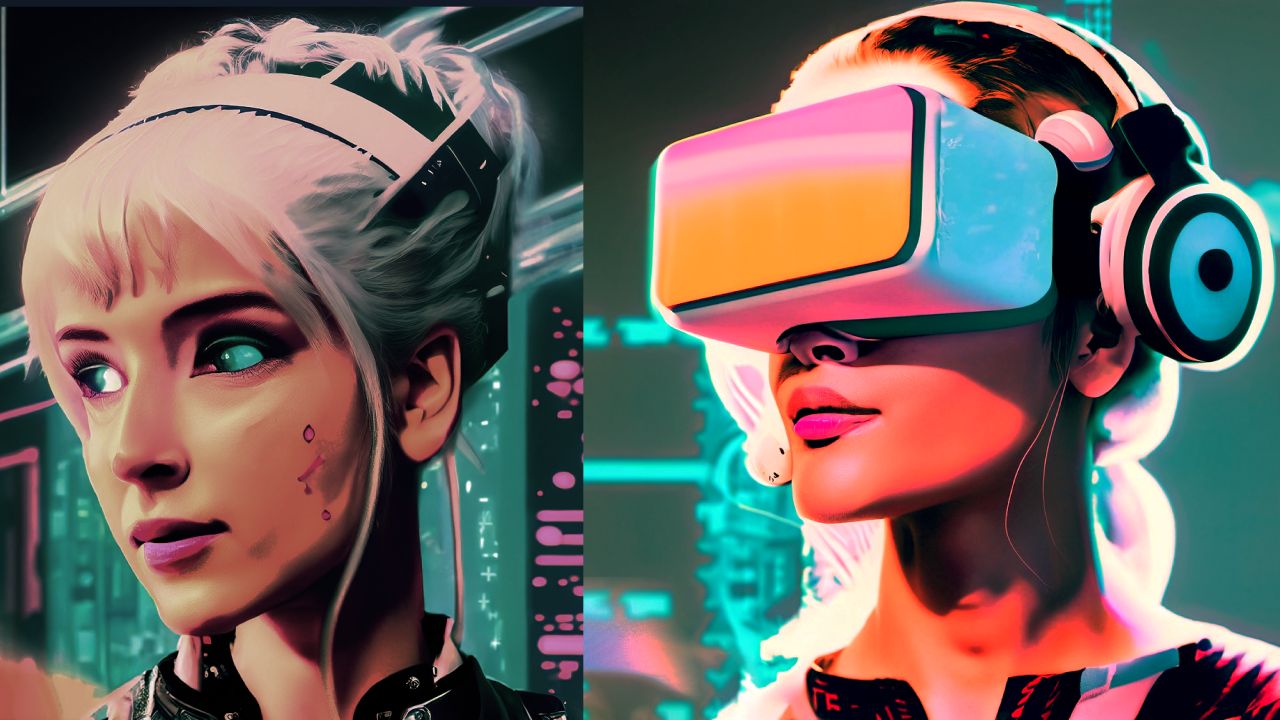Introduction
Welcome to the future of the internet – the Metaverse. As technology continues to advance, we are entering an era where virtual and augmented reality will become an integral part of our daily lives. The Metaverse is a digital universe where users can interact with each other and their surroundings in immersive virtual environments. It offers endless possibilities for creativity, entertainment, and collaboration.
Designing for the Metaverse requires a whole new set of skills and considerations. It goes beyond traditional web and graphic design as it involves creating immersive experiences that blur the lines between the physical and digital worlds. In this article, we will explore the key aspects of designing for the Metaverse and the unique challenges and opportunities it presents.
To truly understand the potential of the Metaverse, we must first grasp the concept itself. The term “Metaverse” refers to a collective virtual shared space that is created by the convergence of physical and digital realities. It encompasses a wide range of technologies, including virtual reality (VR), augmented reality (AR), 3D modeling, and more. In the Metaverse, users can explore, interact, and engage with other users, objects, and environments, creating a seamless and immersive experience.
Designing for the Metaverse involves creating 3D environments, designing avatars and characters, and crafting user interfaces and experiences that enable users to navigate and interact with the virtual world. It also requires considering accessibility, monetization strategies, and social interactions within the Metaverse. Let’s dive deeper into each aspect to gain a better understanding of how to design for this exciting new realm.
Before we explore the intricacies of designing for the Metaverse, it’s important to note that the possibilities are limitless. There is no one-size-fits-all approach, and designers have the freedom to experiment and push boundaries. As the Metaverse continues to evolve, so too will the design principles and best practices. It’s an exciting time to be a designer, as we have the opportunity to shape the future of digital experiences.
Understanding the Metaverse
Before delving into the intricacies of designing for the Metaverse, it is crucial to gain a solid understanding of what exactly it entails. The Metaverse is a virtual world where users can engage with one another and their surroundings through avatars and virtual environments.
At its core, the Metaverse is an interconnected space that brings together different digital platforms, virtual reality (VR) experiences, augmented reality (AR) applications, and social interactions. It is a shared universe where people can connect, create, and collaborate in ways that were previously unimaginable.
Think of the Metaverse as a vast web of interconnected digital spaces, each with its own unique characteristics and purposes. These spaces can be as simple as virtual meeting rooms or as complex as sprawling virtual cities, complete with architectural wonders and bustling activities.
One of the defining features of the Metaverse is its immersive nature. Users can fully immerse themselves in the virtual environment, experiencing it as if it were a physical space. This is achieved through the use of VR headsets, haptic feedback devices, and motion tracking technologies, which allow users to explore and interact with the virtual world in a more lifelike way.
Additionally, the Metaverse is built on the principles of social interaction and community. Users can engage with each other through their avatars, communicate via voice or text chat, and participate in various activities together. This social aspect is a fundamental component of the Metaverse, enabling connections and collaborations that transcend geographical boundaries.
Understanding the Metaverse also involves recognizing its potential for various industries and sectors. From entertainment and gaming to education, healthcare, and even virtual workplaces, the Metaverse opens up a myriad of possibilities for innovation and engagement. It allows for immersive learning experiences, virtual events and conferences, and even remote work in virtual office spaces.
As designers, it is essential to understand the core principles and mechanics of the Metaverse to effectively create experiences within it. By grasping the collaborative and immersive nature of the Metaverse, designers can tailor their creations to enhance social connections, drive engagement, and foster a sense of belonging within the virtual world.
In the next sections, we will explore the key considerations and design principles that are crucial to creating immersive experiences in the Metaverse. By understanding these principles, designers can craft virtual environments that captivate and engage users on a deeper level.
Designing for Immersive Experiences
One of the primary goals of designing for the Metaverse is to create immersive experiences that transport users to a virtual world that feels real and engaging. Achieving this requires careful consideration of various design elements and techniques. Let’s explore some key aspects of designing for immersive experiences in the Metaverse.
1. Visual Design: Visual design plays a critical role in immersing users in the Metaverse. By creating visually stunning and realistic environments, designers can evoke a sense of presence and make users feel like they are truly part of the virtual world. Attention to detail, realistic textures, lighting, and spatial depth are all crucial elements in creating an immersive visual experience.
2. Sound Design: Sound plays a vital role in immersing users in the Metaverse. By utilizing spatial audio techniques, designers can create a sense of depth and realism, enabling users to locate and identify sound sources in the virtual world. Immersive soundscapes, ambient noises, and realistic object sounds can enhance the overall immersive experience for users.
3. Interaction Design: Seamless and intuitive interaction design is crucial for immersing users in the Metaverse. Designers must carefully consider how users can navigate and interact with the virtual environment and other users. From hand gestures and body movements to voice commands and haptic feedback, the more natural and intuitive the interactions, the more immersive the experience becomes.
4. Storytelling and Narrative: Incorporating storytelling and narrative elements in the design of the Metaverse can enhance user immersion. By creating engaging narratives and compelling storylines, designers can provide users with a sense of purpose and motivation within the virtual world. This can further enhance the emotional connection and investment of users in their virtual experiences.
5. Real-Time Rendering: Real-time rendering techniques are essential for creating dynamic and interactive environments in the Metaverse. By utilizing technologies like ray tracing and dynamic lighting, designers can deliver stunning visuals and realistic simulations in real-time, enhancing the level of immersion for users in the virtual world.
Designing for immersive experiences in the Metaverse requires a multidisciplinary approach, combining elements of visual design, sound design, interaction design, storytelling, and real-time rendering. By carefully considering these aspects and creating experiences that engage users’ senses, designers can create virtual worlds that captivate and transport users to extraordinary realms of imagination.
Creating 3D Environments
One of the key aspects of designing for the Metaverse is the creation of 3D environments that provide a rich and immersive experience for users. These environments serve as the virtual “spaces” where users can explore, interact, and engage with the digital world. Here are some considerations for creating 3D environments in the Metaverse.
1. Concept and Design: When creating 3D environments, it is essential to start with a strong concept and design. Define the purpose and theme of the environment and consider the desired user experience. Will it be a virtual city, a fantasy realm, or a futuristic landscape? Create sketches, mood boards, and concept art to guide the visual direction and ensure consistency throughout the design process.
2. Modeling and Texturing: Next, you will need to model and texture the 3D assets that will populate the environment. Utilize 3D modeling software to create the objects, buildings, and elements that will make up the virtual space. Pay attention to detail and consider the scale and proportion of the objects to maintain realism within the environment. Apply textures and materials to enhance the visual appeal and make the environment feel more tactile.
3. Lighting and Atmosphere: Lighting plays a crucial role in setting the mood and atmosphere of a 3D environment. Experiment with different lighting techniques, such as natural or artificial lighting, to achieve the desired ambiance. Consider how light interacts with the objects and surfaces within the environment and use global illumination and shadowing to create depth and realism.
4. Environmental Effects: Adding environmental effects can further enhance the immersive experience of the 3D environment. Consider incorporating effects like fog, rain, snow, or dynamic weather systems to create a more dynamic and engaging atmosphere. These effects can provide a sense of realism and make the virtual world feel more alive.
5. Optimization and Performance: It’s important to optimize the 3D environment for performance, especially in the Metaverse where numerous users might be simultaneously interacting with the virtual space. Optimize the geometry, textures, and shaders to ensure smooth rendering and minimize lag. Consider using level-of-detail techniques to dynamically adjust the level of detail based on the user’s proximity to objects in the environment.
Designing 3D environments for the Metaverse requires a balance between visual appeal, performance optimization, and creating an immersive experience. By carefully considering the concept, modeling and texturing, lighting and atmosphere, environmental effects, and performance optimization, designers can create captivating and realistic 3D environments that users can explore and engage with in the Metaverse.
Designing for Avatars and Characters
Avatars and characters play a significant role in the Metaverse, as they serve as the digital representations of users within the virtual environment. Designing avatars and characters involves creating visually appealing and customizable representations that allow users to express their individuality and engage with others. Here are some considerations for designing avatars and characters in the Metaverse.
1. Customizability: Providing users with a range of customization options is essential for creating engaging avatars. Designers should offer a variety of hairstyles, facial features, body shapes, clothing, and accessories, allowing users to create unique avatars that reflect their personalities. The ability to customize avatars not only enhances user immersion but also promotes a sense of ownership and self-expression within the virtual world.
2. Visual Consistency: While it’s crucial to offer customization options, it’s also essential to maintain visual consistency within the Metaverse. Designers should ensure that avatars and characters align with the overall visual style and theme of the virtual environment. Consistency in proportions, color palettes, and stylistic choices will create a cohesive and harmonious world for users to explore.
3. Animation and Movement: Bringing avatars and characters to life requires well-crafted animations and fluid movement. Designers should create a range of animations that convey different emotions, actions, and interactions. Smooth and natural movements can enhance the sense of presence and realism, making the avatars feel more human-like and relatable.
4. Accessibility: When designing avatars, it’s crucial to consider accessibility for users with disabilities. Provide options to accommodate different abilities, such as adjustable font sizes, color contrast options, and avatar movement controls. This ensures that everyone has an equal and inclusive experience in the Metaverse.
5. Social Interactions: Avatars and characters are at the core of social interactions in the Metaverse. Designers should consider how avatars can communicate non-verbally, through gestures, facial expressions, and body language. Additionally, the ability to interact with other avatars, such as through handshakes, high-fives, or virtual hugs, can foster a sense of connection and enhance social interactions within the virtual world.
Designing avatars and characters in the Metaverse is an opportunity to enable users to express themselves and connect with others in a virtual space. By prioritizing customizability, maintaining visual consistency, focusing on animation and movement, considering accessibility, and fostering social interactions, designers can create engaging and immersive experiences that empower users to truly inhabit their digital personas.
Considerations for Virtual Reality (VR) Design
Virtual Reality (VR) is a key component of the Metaverse, offering immersive experiences that transport users to a fully digital environment. Designing for VR requires careful consideration of various factors to ensure a seamless and comfortable experience. Let’s explore some key considerations for VR design in the Metaverse.
1. User Comfort: VR can induce motion sickness or discomfort if not designed with user comfort in mind. Designers should prioritize minimizing factors like latency, input lag, and visual inconsistencies to prevent discomfort and ensure a smooth experience. Consider implementing comfort settings, such as adjustable field of view, dynamic camera adjustments, or teleportation options, to allow users to customize the experience based on their comfort levels.
2. Navigation and Locomotion: In the virtual world, finding efficient and intuitive ways for users to navigate and move is crucial. Traditional forms of locomotion, such as smooth walking or running, can induce motion sickness. Consider alternative locomotion methods, such as teleportation, arm swinging, or on-rails movement, to reduce discomfort and provide a more enjoyable experience for users.
3. Interactions and Inputs: Designing intuitive and natural interactions within the VR environment is essential. Utilize motion controllers, hand-tracking, or gesture recognition to enable users to interact with objects and the virtual world. Feedback mechanisms, such as haptic feedback or visual cues, can enhance the sense of presence and make interactions feel more responsive and realistic.
4. Spatial Audio: Sound plays a crucial role in creating a sense of presence and immersion in VR. Implement spatial audio to replicate realistic sound propagation, allowing users to locate sound sources in the virtual environment accurately. Consider incorporating positional audio cues to provide users with a sense of directionality and depth, further enhancing the immersive experience.
5. Performance Optimization: VR experiences require high-performance rendering to maintain smooth frame rates and reduce latency. Optimize the use of materials, textures, and lighting to ensure efficient rendering. Consider using techniques like occlusion culling and dynamic level-of-detail to optimize performance and maintain a comfortable VR experience for users.
6. Feedback and Guidance: Provide clear and intuitive feedback to guide users within the VR environment. Use visual cues, audio prompts, or even haptic feedback to inform users about their actions, progress, or potential interactions. Clear and concise instructions can help users understand the possibilities and limitations of the VR experience, enhancing their overall engagement and enjoyment.
Designing for virtual reality within the Metaverse presents unique challenges and opportunities. By prioritizing user comfort, considering navigation and locomotion, designing intuitive interactions, implementing spatial audio, optimizing performance, and providing effective feedback and guidance, designers can create immersive and enjoyable VR experiences that enrich the Metaverse and captivate users’ senses.
Designing for Augmented Reality (AR)
Augmented Reality (AR) is another integral element of the Metaverse, blending digital information and virtual objects with the real world. Designing for AR entails creating interactive and context-aware experiences that enhance the user’s perception of reality. Let’s explore some key considerations for designing in the realm of Augmented Reality.
1. Contextual Relevance: Designing for AR necessitates considering the context in which the user will be experiencing the augmented content. Understanding the user’s environment and the specific context in which they will be using AR is essential for creating meaningful and relevant experiences. Content should be designed to seamlessly integrate with the real world and provide value or enhancement to the user’s surroundings.
2. User Interface (UI) Design: AR interfaces need to be intuitive, unobtrusive, and contextually appropriate. Due to limited screen space or the use of wearables like smart glasses, designers must focus on simplicity and prioritize essential information. Clear and concise visual cues, labels, and gestures can guide users in interacting with AR content seamlessly.
3. Spatial Mapping and Tracking: Accurate spatial mapping and object tracking are critical for AR experiences. Designers need to ensure that the virtual content aligns properly with the real world environment and maintains proper spatial relationships. This involves leveraging technologies like SLAM (Simultaneous Localization and Mapping) to enable accurate placement and persistence of virtual objects.
4. Visual Feedback and Persistence: Visual feedback is crucial for users to perceive and interact with augmented content effectively. Leveraging animation, highlighting, and visual cues can provide real-time feedback to users, ensuring they understand the interactions and responses of the virtual objects. Persistence of AR content is also important, ensuring that objects stay in the user’s field of view as they move around in the real world.
5. Integration with Real-World Objects: Designing AR experiences that seamlessly integrate with real-world objects can enhance user engagement and immersion. By recognizing and augmenting physical objects or surfaces, designers can create unique and interactive experiences that bridge the gap between the digital and physical realms. This can include overlaying information, adding virtual enhancements, or enabling interactive storytelling based on real-world triggers.
6. Considerations for Mobile AR: Many AR experiences are accessed through mobile devices. Designing for Mobile AR requires optimizing the experience for smaller screens, considering battery life and bandwidth limitations, and providing clear instructions for camera alignment and focal point calibration. Additionally, leveraging device capabilities like GPS, gyroscopes, and accelerometers can enhance location-based AR experiences.
Designing for Augmented Reality within the Metaverse offers unparalleled opportunities for blending digital and physical worlds. By considering contextual relevance, designing intuitive user interfaces, ensuring accurate spatial mapping and tracking, providing visual feedback and persistence, integrating with real-world objects, and optimizing for mobile AR, designers can create immersive and interactive AR experiences that seamlessly merge the virtual and real-world environments.
The Importance of Accessibility in the Metaverse
As virtual and augmented reality technologies continue to advance, it becomes increasingly critical to prioritize accessibility in the design of the Metaverse. Accessibility ensures that individuals of all abilities can fully participate and engage in the virtual world, fostering inclusivity and equal opportunities. Let’s explore why accessibility is crucial in the Metaverse.
1. Equal Access and Participation: Accessibility ensures that individuals with disabilities have equal access to the digital realm of the Metaverse. By incorporating inclusive design principles, designers can ensure that people with visual impairments, hearing loss, mobility limitations, or cognitive disabilities can engage with the virtual environment, interact with objects, and communicate with other users. This fosters a sense of belonging and empowers individuals to fully participate in the Metaverse experience.
2. Empathy and Inclusivity: By prioritizing accessibility, designers demonstrate empathy and inclusivity towards users with different abilities. It shows a recognition and understanding of the diverse needs and experiences of individuals, fostering an inclusive environment within the Metaverse. This emphasis on inclusivity helps to break down barriers, challenge stigmas, and promote a more accepting and diverse virtual community.
3. Universal Design Principles: Incorporating accessibility principles in the design process of the Metaverse aligns with the concept of universal design. Universal design aims to create products, environments, and experiences that can be used by people with diverse abilities effortlessly. By implementing universal design principles, such as clear and intuitive interfaces, keyboard alternatives for input, adjustable font sizes and color contrasts, and nuanced audio descriptions, designers can ensure that the Metaverse is accessible to everyone.
4. Compliance with Regulations: Accessibility is not just a moral and ethical obligation but also a legal requirement in many jurisdictions. In several countries, legislation mandates compliance with accessibility standards. By designing with accessibility in mind, companies and organizations can avoid legal issues and potential discrimination claims, ensuring that their virtual experiences and platforms are accessible to a wider audience.
5. Expanding Audience Reach: Prioritizing accessibility allows the Metaverse to reach a broader audience. By removing barriers and providing accessible experiences, the virtual world becomes accessible to individuals with disabilities, senior citizens, and those who may have had limited access to traditional forms of digital media. This expands economic opportunities, allows for diverse perspectives and contributions, and ultimately benefits the entire virtual community.
Designing the Metaverse with accessibility in mind is not only a moral imperative but also a strategic advantage. By creating an inclusive and accessible virtual environment, designers can ensure equal participation, foster empathy and inclusion, adhere to legal requirements, expand audience reach, and ultimately create a more enriching and diverse community within the Metaverse.
User Interface (UI) and User Experience (UX) Design for the Metaverse
User Interface (UI) and User Experience (UX) design are crucial in creating intuitive and engaging experiences within the Metaverse. UI and UX design in the virtual world require careful consideration of usability, interactivity, and immersion. Let’s explore the key principles and considerations for UI and UX design in the Metaverse.
1. Intuitive Navigation: The UI design should prioritize intuitive navigation to allow users to explore the Metaverse seamlessly. Designers should consider clear iconography, intuitive menu structures, and logical information hierarchy to enable users to navigate virtual spaces, access features, and interact with objects effortlessly. Streamlining navigation enhances usability and minimizes user frustration.
2. Clear Feedback and Visual Cues: Providing clear visual feedback is essential for users to understand their actions and the system’s responses within the virtual environment. Visual cues, animations, and on-screen indicators can make interactions feel more responsive and guided. Feedback mechanisms like haptic or audio cues can further enhance the sense of immersion and reinforce user actions.
3. Consistent Design Language: Consistency in UI design throughout the Metaverse is crucial for creating a cohesive and familiar user experience. A consistent design language helps users learn and understand how to interact with different elements, whether they are navigating between virtual spaces or interacting with objects. Consistency in typography, color schemes, button styles, and interaction patterns fosters user confidence and ease of use.
4. Contextual Interactions: Designing for the Metaverse requires considering the context in which users will be interacting with virtual content. A user’s physical location, the objects in their surroundings, and the specific task at hand should all inform the design of contextual interactions. This can include context-aware menus, object recognition, or gesture-based interactions that align with the user’s real-world environment.
5. Empathy and Inclusivity: UX design in the Metaverse should prioritize empathy and inclusivity. Consideration should be given to users of different abilities, language preferences, and cultural backgrounds. Providing localization options, adjustable font sizes, language alternatives, and customizable interfaces ensures that the Metaverse can be accessed and enjoyed by a wider audience, fostering inclusivity and equal participation.
6. Performance Optimization: UX design in the Metaverse should consider performance optimization to ensure a smooth and enjoyable experience for users. This involves optimizing rendering, minimizing latency, and streamlining data transmission to reduce lag and provide seamless interactions. Performance optimization is crucial to maintain user engagement, minimize frustration, and enhance immersion within the virtual environment.
Designing the UI and UX for the Metaverse requires a careful balance between user-friendly interfaces, immersive interactions, and performance optimization. By prioritizing intuitive navigation, clear feedback and visual cues, consistency in design language, contextual interactions, empathy and inclusivity, and performance optimization, designers can create compelling and user-centered experiences that captivate users within the vast digital realm of the Metaverse.
Designing for Social Interactions in the Metaverse
Social interactions are at the core of the Metaverse, where users connect and engage with each other in immersive virtual environments. Designing for social interactions in the Metaverse involves creating meaningful connections, fostering collaboration, and facilitating seamless communication. Let’s explore some key considerations for designing social interactions in the Metaverse.
1. Seamless Communication: Designers should prioritize seamless communication tools within the Metaverse. This can include voice chat, text messaging, and even virtual conferencing capabilities. Providing easy-to-use communication features enables users to connect, collaborate, and build relationships, fostering a sense of community within the virtual world.
2. Avatars and Expression: Avatars play a crucial role in social interactions within the Metaverse. Designers should provide customization options and expressive features to allow users to represent themselves authentically and express their emotions. Gestures, facial expressions, and body language can enhance non-verbal communication and contribute to a more immersive and engaging social experience.
3. Group Activities and Collaboration: The design of the Metaverse should facilitate group activities and collaboration. Creating opportunities for users to engage in shared experiences, such as virtual events, multiplayer games, or collaborative projects, promotes social interaction and strengthens the sense of community. Designers should consider features like virtual meeting spaces, shared whiteboards, or cooperative gameplay to foster collaborative interactions.
4. Privacy and Safety: Designing for social interactions in the Metaverse requires careful consideration of privacy and safety. Implementing robust privacy settings, moderation tools, and user reporting features helps ensure a safe and inclusive environment. Designers should strive to create a space where users feel comfortable expressing themselves, free from harassment or malicious behavior.
5. Social Hierarchies and Identity: Designers should be mindful of the potential social dynamics and hierarchies that can emerge within the Metaverse. Encouraging a culture of respect, inclusivity, and healthy interaction is crucial to create an environment where users feel valued and accepted, regardless of their background or identity. Implementing features that encourage positive social behaviors and discourage toxic behavior can help shape a vibrant and welcoming virtual community.
6. Virtual Economies and Trading: Social interactions within the Metaverse can extend beyond communication and collaboration. Designers should consider implementing virtual economies and trading systems that allow users to exchange virtual goods, services, and experiences. This adds another layer of social interaction and potential for user-driven communities and economic activities within the virtual world.
Designing for social interactions in the Metaverse requires a focus on seamless communication tools, expressive avatars, group activities and collaboration features, privacy and safety measures, inclusivity, and virtual economies. By considering these factors and fostering a sense of community, designers can create a vibrant and engaging social space within the virtual realms of the Metaverse.
Monetization and Revenue Strategies
As the Metaverse continues to evolve, monetization and revenue strategies become essential considerations for sustained growth and development. Designers and creators within the Metaverse need to explore diverse avenues to generate revenue while providing value to users. Let’s delve into some key monetization strategies and revenue models in the Metaverse.
1. Virtual Goods and In-App Purchases: Virtual goods, such as clothing, accessories, or unique items, can be monetized within the Metaverse. Designers can offer these goods for purchase, allowing users to personalize their avatars or enhance their virtual experiences. Implementing in-app purchases for virtual goods and additional content can provide a sustainable revenue stream while allowing users to customize and enhance their virtual presence.
2. Virtual Real Estate: Just as in the physical world, virtual land and properties hold value within the Metaverse. Designers can offer virtual real estate for purchase or rental, allowing users to build and monetize their creations or establish virtual businesses. This can range from virtual storefronts and digital art galleries to virtual event venues or educational spaces.
3. Subscriptions and Membership: Subscription models can be leveraged within the Metaverse to generate recurring revenue. Designers can offer memberships or premium subscriptions, giving users access to exclusive content, features, or enhanced experiences. This model promotes user loyalty and can provide a steady revenue stream for ongoing operations and content development.
4. Virtual Events and Experiences: Hosting virtual events, conferences, or live performances within the Metaverse presents an opportunity for monetization. Designers can sell virtual tickets or access passes to exclusive virtual experiences. Additionally, partnering with sponsors or advertisers can create sponsorship opportunities for branded virtual events, providing a mutually beneficial revenue source.
5. Advertising and Brand Partnerships: Advertising can play a role in generating revenue within the Metaverse. Designers can integrate non-intrusive ads or brand placements within the virtual environment while ensuring they align with the overall user experience. Strategic brand partnerships can provide additional revenue sources through sponsorship or cross-promotion opportunities.
6. Blockchain and NFTs: The integration of blockchain technology and Non-Fungible Tokens (NFTs) presents new possibilities for monetization. Designers can create and sell unique digital assets, collectibles, or limited edition items as NFTs, providing scarcity and exclusivity to users. Additionally, blockchain-backed transactions and smart contracts can enhance security and transparency in virtual marketplaces.
It’s important for designers and creators in the Metaverse to strike a balance between monetization strategies and user experience. User satisfaction and value should always be prioritized, ensuring that monetization methods enhance rather than detract from the overall virtual experience. By diversifying revenue streams through virtual goods, virtual real estate, subscriptions, virtual events, advertising partnerships, and exploring blockchain opportunities, designers can sustain the growth and development of the Metaverse while creating valuable and engaging experiences for users.
Conclusion
The Metaverse represents an exciting future where virtual and augmented reality converge to create immersive digital experiences. Designing for the Metaverse requires a unique set of skills and considerations, as it goes beyond traditional web or graphic design. As we explored the various aspects of Metaverse design, we learned about creating immersive experiences, designing 3D environments, crafting avatars and characters, and optimizing for virtual reality and augmented reality.
In addition, we delved into the importance of accessibility, user interface and user experience design, social interactions, and monetization strategies within the Metaverse. These factors are crucial in ensuring inclusive and engaging experiences for users, fostering community, and driving sustainable growth.
As designers and creators, we have a responsibility to shape the future of the Metaverse in a way that prioritizes user satisfaction, inclusivity, and innovation. By continuously pushing boundaries, experimenting with new technologies, and incorporating user feedback, we can create immersive and meaningful experiences within the virtual realm.
It’s important to note that the Metaverse is an ever-evolving concept, and the principles and best practices we explore today will continue to evolve. As technology advances, new possibilities will emerge, requiring designers to adapt and stay at the forefront of innovation.
The Metaverse holds immense potential for entertainment, education, collaboration, and beyond. It enables us to connect and engage with people from all over the world, explore limitless creativity, and transform digital experiences into unforgettable realities.
As we journey into this exciting future, let us embrace the challenges, stay open to possibilities, and continuously strive to create immersive, inclusive, and awe-inspiring experiences within the Metaverse.











